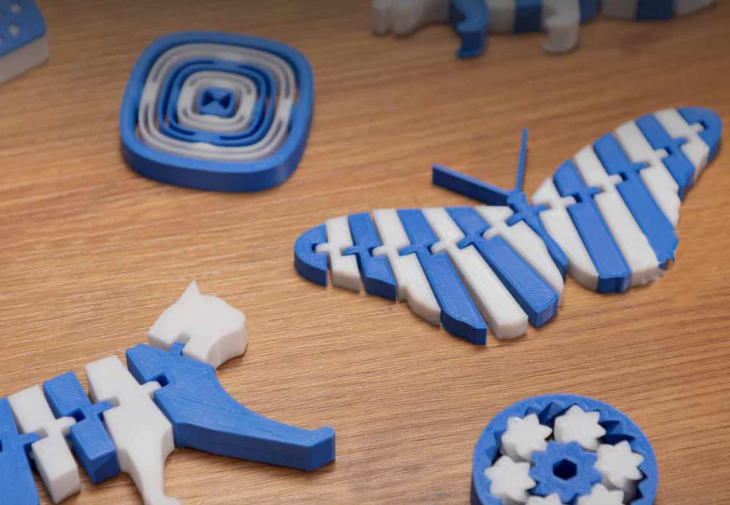For every 3D printing enthusiast, there’s a “moment.” It’s that point where your trusty entry-level printer, the machine you’ve patiently tinkered with and learned on, starts to feel less like a gateway to a new hobby and more like a barrier to your ambitions.
You’re no longer just downloading figurines. You’re designing functional parts, experimenting with new materials, and dreaming up projects that are bigger, stronger, or more complex than your current machine can handle.
Upgrading your 3D printer is a big step, and “wanting a new one” is often hard to justify. But “needing a new one” is different. It’s a transition from a hobbyist who tinkers to a prosumer who produces. If you find yourself nodding along to any of the following “growing pains,” it might be time to start looking.
1. You’re Hitting a Wall (Literally) with Build Volume
This is the most obvious sign. You’ve mastered printing small objects, but now you want to build a full-sized helmet, a functional prototype, or a piece of custom furniture. You find yourself spending more time designing clever (and weak) interlocking joints to piece models together than you do on the design itself.
A small build volume forces you to compromise on your vision. Upgrading to a machine with a larger build plate and Z-axis isn’t just a minor improvement; it’s a fundamental change that unlocks an entirely new scale of creation.
2. You Want to Print with “The Good Stuff”
That first year of printing is almost exclusively done with PLA. But as your skills grow, so does your curiosity about more advanced materials. You want to print a car dashboard mount that won’t melt in the sun, a carbon-fiber-infused bracket that’s as strong as metal, or a flexible, rubber-like gasket.
This is when you discover your entry-level machine can’t keep up.
- High-Temperature Materials (like ABS, ASA, or PC): These require an all-metal hotend that can exceed 260°C and, most importantly, a fully enclosed build chamber. An enclosure maintains a stable, high ambient temperature, which is the only way to prevent these materials from warping and splitting.
- Abrasive Materials (like Carbon Fiber or Glow-in-the-Dark): Printing these with a standard brass nozzle will destroy it in a matter of hours. You need a printer that can easily swap to a hardened steel nozzle and has a robust extruder to handle these tough, high-performance materials.
If your projects now demand engineering-grade properties, you need a machine built to handle engineering-grade 3D printer filament.
3. You’re Spending More Time Tinkering Than Printing
Remember the excitement of your first successful print? Now, how much of your “printing” time is actually spent leveling the bed (again), re-calibrating your E-steps, tightening loose V-wheels, and diagnosing yet another “Z-wobble” issue?
Entry-level machines are built to a price point. They often use softer frames, less precise components, and require constant manual adjustment.
A “prosumer” or “pro” level 3D printer invests in reliability. Features like:
- A rigid, all-metal frame
- High-quality linear rails (instead of V-wheels)
- Automatic bed-leveling that actually works
- A direct-drive extruder
These aren’t just “nice-to-haves.” They are the components that give you consistency, precision, and—most importantly—your time back. When you upgrade, you’re paying for a machine that you can trust to print successfully, on the first try, without an hour of pre-flight checks.
4. You Need Speed… and Quality
Your first printer was probably slow. To get a decent-looking print, you had to run it at a snail’s pace (like 50-60 mm/s). Now, a 12-hour print for a small part feels like an eternity.
Newer, more powerful printers have changed the game. With features like Klipper firmware, CoreXY motion systems, and more powerful processing, these machines can print at speeds of 250 mm/s, 500 mm/s, or even faster, all while maintaining—or even improving—print quality.
When your printer is no longer a bottleneck, your entire design process accelerates. You can iterate on a prototype three times in a single day instead of waiting until the weekend.
5. You Want an Ecosystem, Not Just a Printer
You’ve realized that 3D printing is just one piece of the “maker” puzzle. Your 3D printed parts are often combined with other materials. You might be printing an enclosure, but you need to laser-engrave a logo on it. You might 3D print a jig, but you still need to CNC-mill the final part out of wood or aluminum.
This is when you realize you don’t just need a better printer; you need a more capable tool. A modular, all-in-one machine that combines a 3D printer with a laser cutter and a CNC carving head turns your desktop into a true digital fabrication workshop.
Is It Your Time?
Don’t abandon your first printer—it was an amazing teacher. But if you feel that your ideas are bigger than your machine, your material needs are more demanding than its capabilities, and your time is more valuable than its constant tinkering, then you have your answer. You’re not just a hobbyist anymore, and it’s time for a tool that can keep up with you.





